NASA spacecraft to impact planet Mercury on Thursday
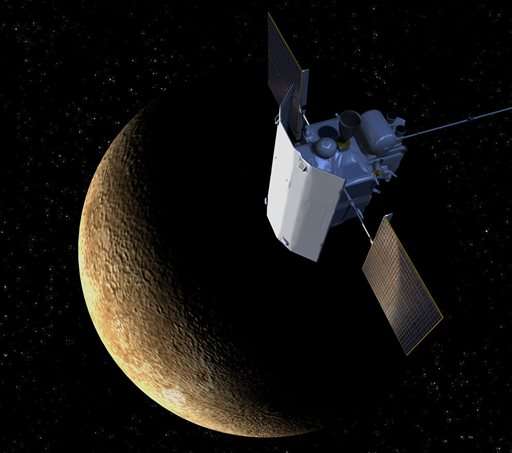
NASA's Mercury-orbiting spacecraft, Messenger, is going out with a bang this week, adding a hefty crater to the little planet closest to the sun.
The first spacecraft to circle Mercury, Messenger is expected to slip out of orbit and slam into Mercury on Thursday following a successful four-year tour of the rocky planet. The spacecraft will be traveling 8,750 mph (14,081 kph) when it hits, fast enough to carve out a crater 52 feet (16 meters) wide. The spacecraft itself stretches 10 feet (3 meters) solar wingtip to wingtip.
Messenger has run out of fuel, but ground controllers managed in recent weeks to eke out some extra life, raising Messenger's orbit by dipping into helium gas reserves not originally intended for use as fuel. But now that's all gone and Messenger is at the mercy of gravity.
"I guess the end is coming," the Messenger team said via Twitter earlier this week. "After 10 years, spacecraft will end life as just another crater on Mercury's surface."
A look at Mercury's soon-to-be-obliterated travel companion:
ROUNDABOUT FLIGHT
Messenger rocketed away from Cape Canaveral, Florida, in August 2004. It flew twice past Venus and three times past Mercury, before entering orbit around Mercury in March 2011. Only one other spacecraft, NASA's Mariner 10, has ever visited Mercury, and that was back in the 1970s. Mariner 10 flew past, but did not orbit the innermost planet. The $427 million Messenger mission was developed and run for NASA by Johns Hopkins University.
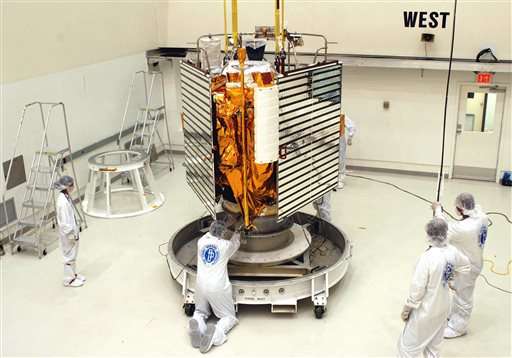
SCIENCE DISCOVERIES
During its four years in orbit—comprising more than 4,000 laps—Messenger has revealed volcanic deposits that are helping to explain the planet's important eruptive and interior-melting past; polar caps of frozen water at or near the surface; and incredible global shrinkage thanks to a cooling interior. In addition, despite its proximity to the sun, Mercury is more abundant in volatile elements, like potassium and sulfur, than anticipated before Messenger's arrival, according to Messenger's principal investigator Sean Solomon, director of Columbia University's Lamont-Doherty Earth Observatory. Planetary scientists will be looking at Messenger's huge stash of data "for years, probably for decades, as we try to understand the origin and evolution of Mercury," Solomon said.
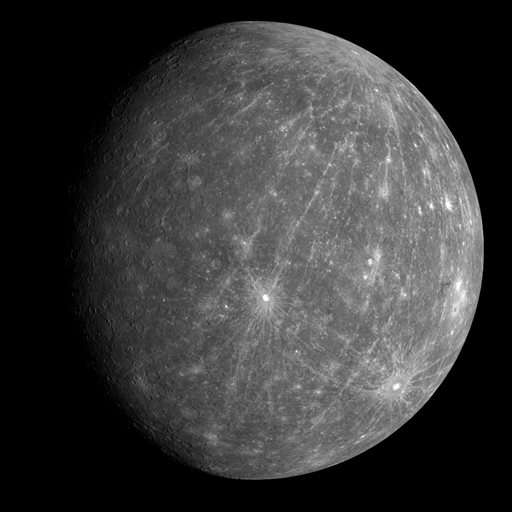
SUPER SUNSHADE
Messenger's creators needed to keep the spacecraft cool during its super-hot mission at Mercury. "It's an enormously hostile environment," said Jim Green, director of planetary science for NASA. Designers came up with a novel sunshade of lightweight ceramic cloth. This sunscreen tolerated more than 600 degrees Fahrenheit (316 degrees Celsius) on the front, while keeping everything behind it at room temperature, including the seven scientific instruments. Messenger also regularly performed "an intricate dance" to balance all the infrared heat that was reflected off Mercury back at the spacecraft. At the same time, engineers equipped Messenger with numerous heaters to keep the fuel from freezing and the electronics from faltering when the spacecraft ducked behind the planet, away from the sun.
SMASHING END
On Thursday, Messenger is expected to crash into the side of Mercury facing away from Earth. So there will be no cameras or observatories to witness the impact. Scientists expect to gather information from Messenger until 10 to 15 minutes before its fatal plunge. The expected crash site is about two-thirds of the way up the planet, near the north pole. Mercury is the smallest planet—a little bigger than our moon.
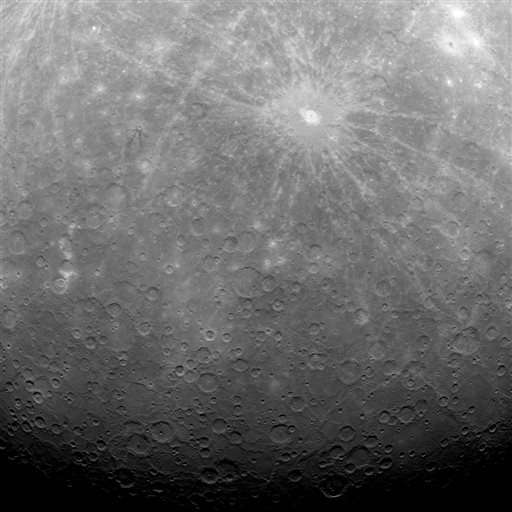
UPCOMING AT MERCURY:
A pair of European and Japanese spacecraft will aim for Mercury following a 2017 launch from South America's French Guiana. It will take seven years for the two satellites to reach Mercury and enter its orbit, in 2024. The mission is called BepiColombo after the late Italian scientist who came up with the calculations for repeated fly-bys of Mercury by Mariner 10.
-
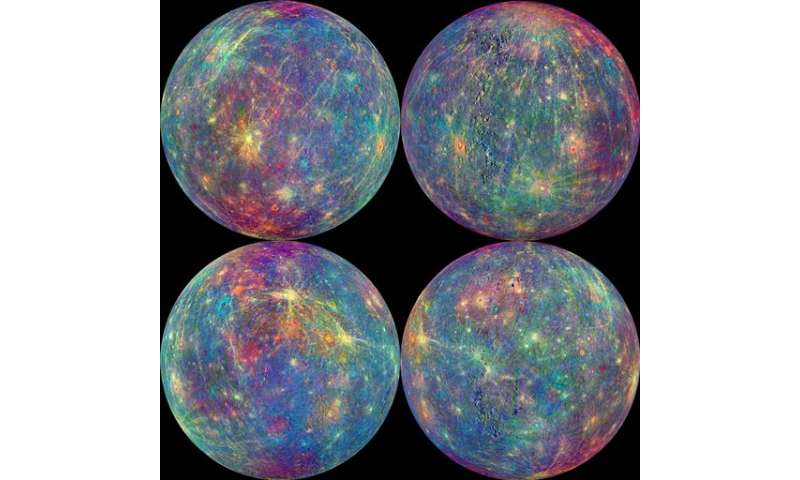
This combination of images provided by NASA shows the readings from the Mercury Atmosphere and Surface Composition Spectrometer (MASCS) instrument aboard the Messenger spacecraft. Colors were added to study both the exosphere and surface of the planet. (NASA, Johns Hopkins University Applied Physics Laboratory, Carnegie Institution of Washington via AP) -
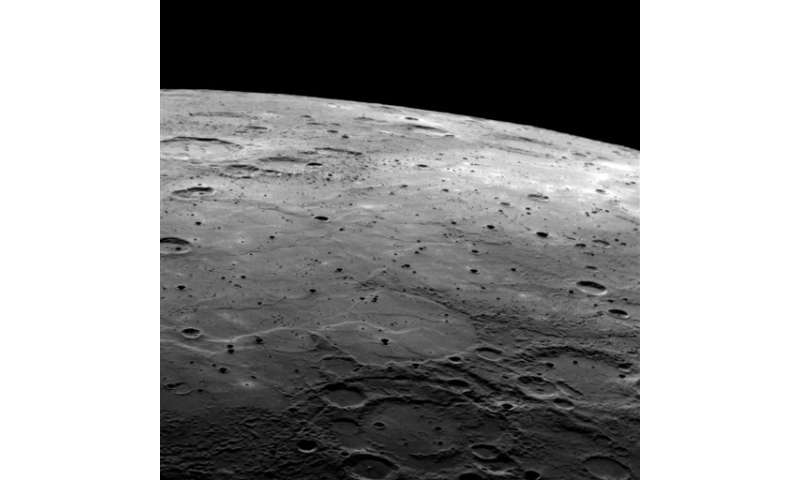
This Oct. 6, 2008 image provided by NASA shows previously unseen terrain on Mercury as the Messenger spacecraft approached the planet during its second flyby. In the foreground is a region of rough, heavily cratered terrain with a large, ancient two-ring impact basin at the bottom center of the image. In the distance is a region of younger, tectonically modified smooth plains that have been pockmarked by small craters. (NASA, Johns Hopkins University Applied Physics Laboratory, Carnegie Institution of Washington via AP) -
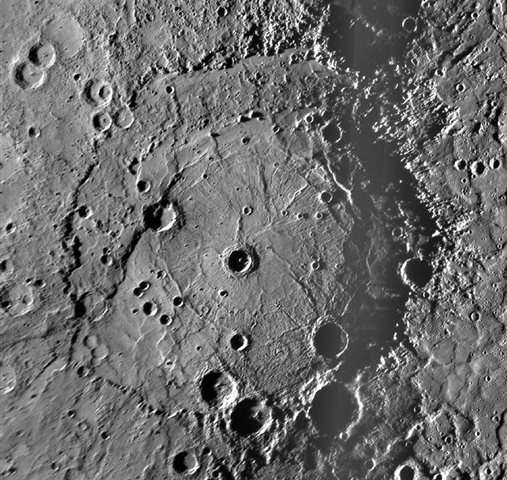
This October 2008 image provided by NASA shows the Rembrandt impact basin discovered by the Messenger spacecraft during its second flyby of Mercury. (NASA, Johns Hopkins University Applied Physics Laboratory, Carnegie Institution of Washington via AP) -
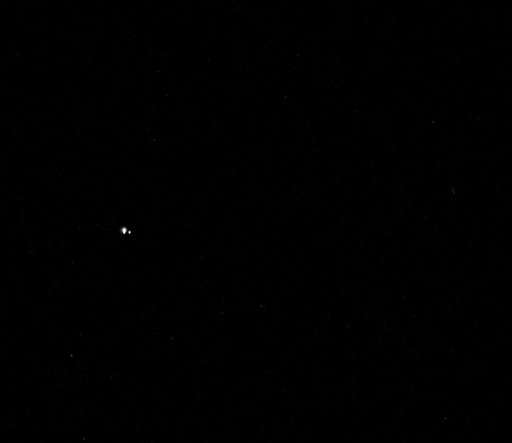
This July 19, 2013 image provided by NASA shows the Earth and the moon, center left, from NASA's Messenger spacecraft at a distance of 98 million kilometers (61 million miles) away. (NASA, JPL-Caltech, Space Science Institute, Johns Hopkins University Applied Physics Laboratory via AP)
More information: NASA: www.nasa.gov/mission_pages/messenger/main
Johns Hopkins University: messenger.jhuapl.edu/
© 2015 The Associated Press. All rights reserved.




















